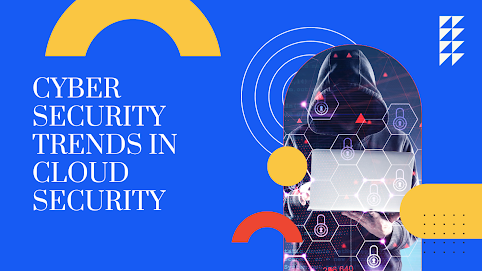Cybersecurity Trends in Cloud Security
Introduction
In today's rapidly evolving technological landscape, cloud computing has become an integral part of businesses worldwide. As companies increasingly rely on cloud services to store and process their data, cybersecurity concerns have taken center stage. This article explores the latest cybersecurity trends in cloud computing, shedding light on what individuals and organizations should be vigilant about.
The Growing Significance of Cloud Security
1. Rise in Cloud-Based Attacks
With the proliferation of cloud adoption, cybercriminals are targeting cloud environments more than ever before. They exploit vulnerabilities in cloud infrastructures to gain unauthorized access to sensitive information.
2. Multi-Factor Authentication (MFA) as Standard
Implementing multi-factor authentication is no longer an option but a necessity. MFA adds an extra layer of security, requiring users to provide multiple forms of identification before gaining access to cloud services.
Evolving Threat Landscape
3. Sophisticated Malware and Ransomware
As cyber threats become more sophisticated, malware and ransomware attacks on cloud systems are on the rise. These attacks can lead to data loss, financial losses, and reputational damage.
4. Zero Trust Architecture (ZTA)
The Zero Trust model is gaining prominence in cloud security. It assumes that no one, whether inside or outside the organization, can be trusted and requires strict identity verification for every person and device trying to access resources.
Compliance and Regulatory Considerations
5. GDPR and Data Protection
With the implementation of the General Data Protection Regulation (GDPR), businesses are obligated to protect customer data, even in cloud environments. Non-compliance can result in hefty fines.
6. Industry-Specific Regulations
Various industries have specific regulations regarding data storage and protection. Adhering to these regulations is crucial for businesses operating in those sectors.
Cloud Security Best Practices
7. Regular Security Audits and Assessments
Frequent security audits help identify vulnerabilities and ensure that security measures are up to date.
8. Employee Training and Awareness Programs
Employees are often the first line of defense against cyber threats. Training programs can empower them to recognize and respond to potential security risks.
Future Trends in Cloud Security
9. AI and Machine Learning for Threat Detection
Artificial intelligence and machine learning technologies are being leveraged to detect and respond to security threats in real time.
10. Edge Computing Security
As edge computing gains traction, securing data at the edge of the network will become a critical concern.
Conclusion
In an era of rapid technological advancement, staying ahead of cybersecurity threats in cloud computing is paramount. Implementing robust security measures, staying compliant with regulations, and adopting emerging technologies are all essential steps in safeguarding valuable data.
Visit our other website for dedicated support.



Comments
Post a Comment